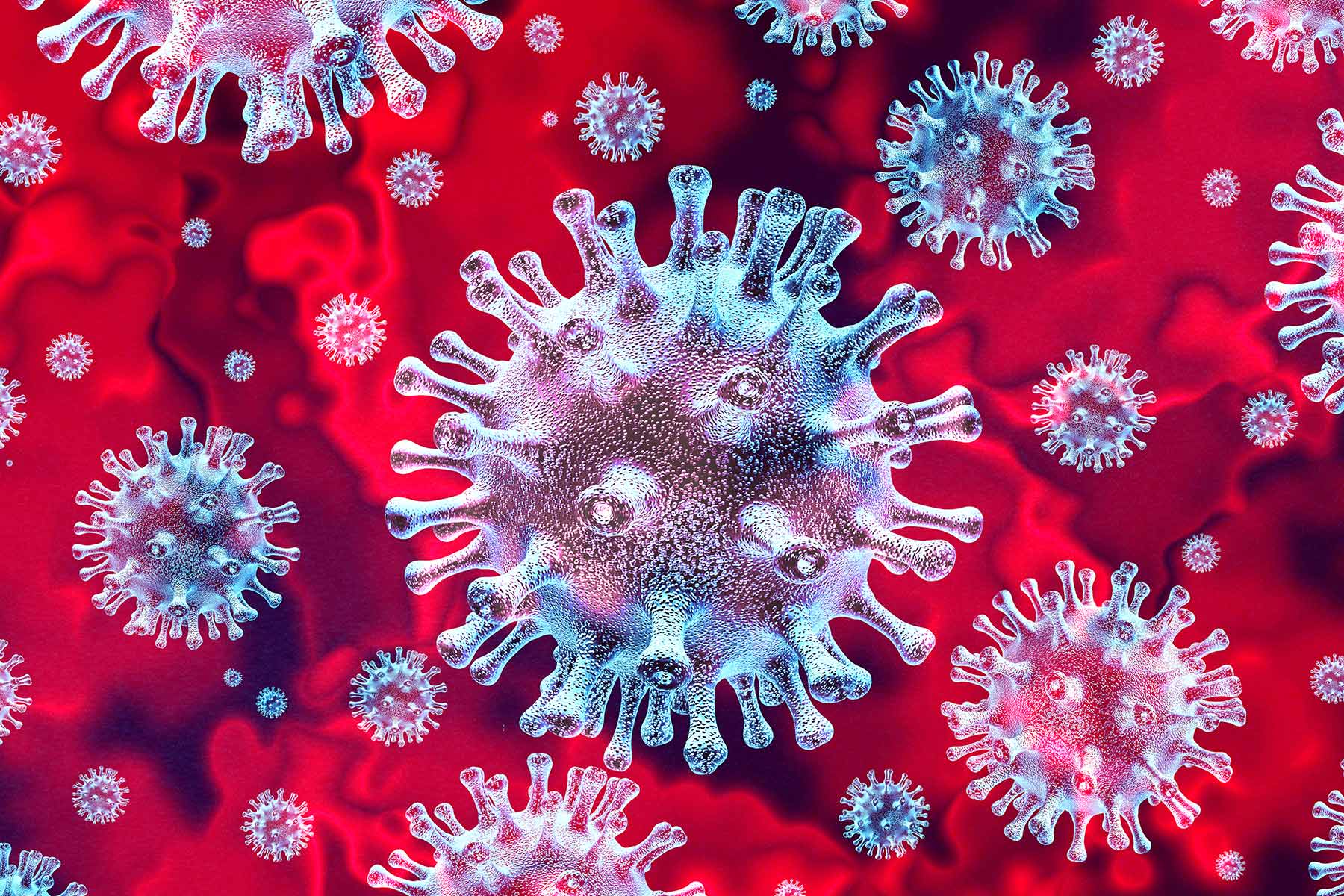Introduction to vaccines:
Vaccines are an integral part of ensuring immunity against diseases that have wrought havoc on human populations prior to today. Some of the most famous vaccines include Smallpox, MMR (Mumps, Measles, and Rubella), HPV (Human Papilloma Virus), and polio. Typically vaccines contain an inactive or weakened form of the pathogen (disease-causing agent), allowing us to develop an immunity to the disease with minimal side-effects and symptoms. The COVID-19 (SARS-CoV-19) Pfizer vaccine differs, in that it is an mRNA vaccine, more on that later. This will attempt to provide a brief explanation of how the vaccine was developed so fast, what it contains and how it induces immunity.
How was it made so fast?
Many people are alarmed by the speed at which the COVID-19 vaccine was developed. However, this needn’t be a point of worry. COVID-19 research has perhaps been one of the most well-funded area within medical research, of our time (Ball, 2020). This is due to both private and public funds being donated to stop the spread of the virus which has robbed us, for the most part, of our freedom. As a result, the speed at which research could be conducted increased, due to funds to afford laboratory reagents. It is important to note also, that clinical trials could be conducted on a mass scale with the huge uptake of volunteers. Therefore, the combination of funding and uptake of volunteers decreased the time it would have taken to develop the vaccine. In America, at the 1 million vaccination point only 3 have demonstrated an allergic reaction, so this shouldn’t be seen as a threat. Furthermore, there are guidelines in place to prevent and treat anaphylaxis (severe allergic reactions), should it occur (Cdc.gov, 2020).
What is in it?
Sometimes, the ingredients of vaccines are more intimidating when left as is. Minimal explaination can dispel anxiety regarding the contents of a vaccine. The ingredients disclosed on the FDA website (Fda.gov, 2020) are as follows:
- mRNA – message to tell our body to produce the COVID-19 spike protein
- Lipids – helps the mRNA enter our cells – our cell’s membranes are also lipids
- Potassium chloride – KCl – naturally found in the body
- Monobasic potassium phosphate – found in the body
- Sodium chloride – NaCl – table salt – also naturally found in the body
- Dibasic sodium phosphate dihydrate – found in foods and water softening treatment
- Sucrose – Table Sugar
As you can see from above, the components of the vaccine are not as intimidating as thought. Many of the components are found in our everyday life, and in many cases, we consume more of some components in our diet than in a vaccine.
What does it do?
The vaccine, as mentioned before, works differently in our bodies. Traditional vaccines trigger resistance through exposure to the pathogen. In the case of the Pfizer COVID-19 vaccine, it introduces mRNA, which our body turns into the COVID-19 spike protein (the protein responsible for COVID-19 recognising and infecting our cells, Figure 1; Huang et al., 2020).
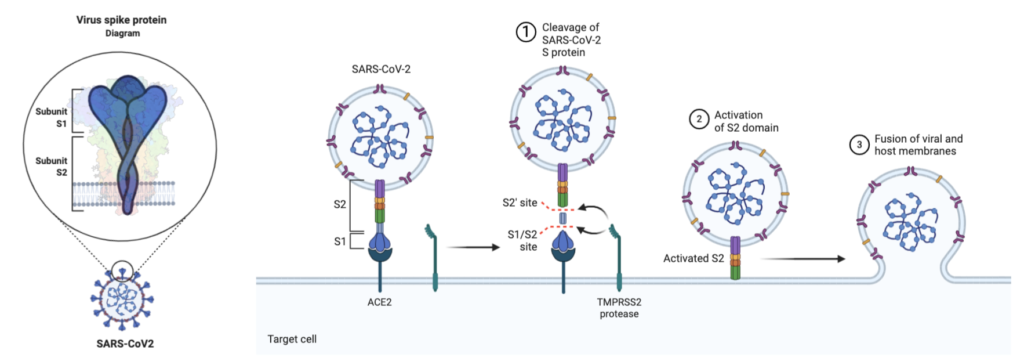
Figure 1 – BioRender schematic showing the COVID-19 spike protein (Diana Sofia Mollocana Yanez), and the use of the spike protein to enter our cells during infection (Hartenian et al., 2020).
mRNA is naturally found in our cells and is made from our DNA as a message which is made into a protein that usually performs a function, or results in a trait (Figure 2A; Hargrove and Schmidt, 1989). Therefore, this vaccine is using a process our body performs all the time. However, when the COVID-19 spike protein is made from the mRNA in the vaccine (Figure 2B), the body recognises it as non-self, starts an immune response and we generate immunity as a result.
A B
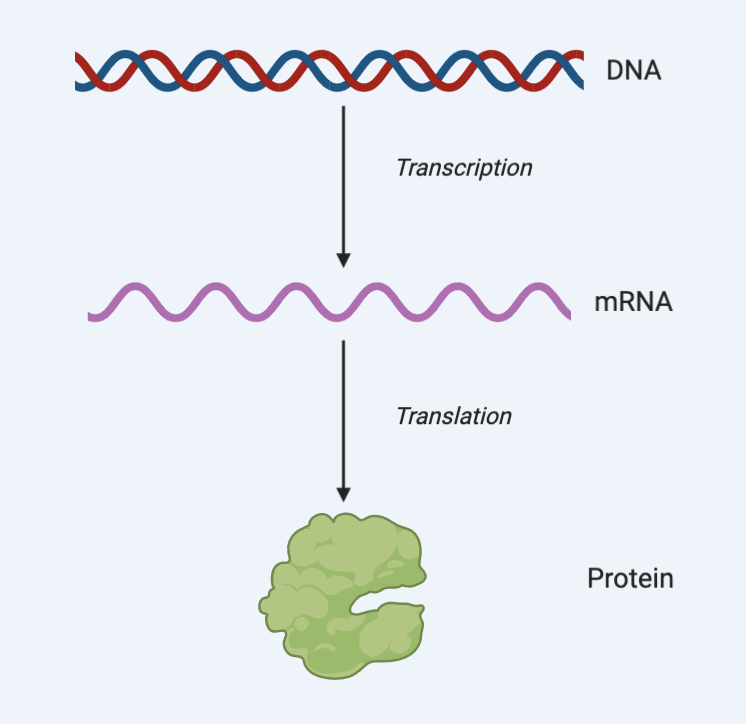
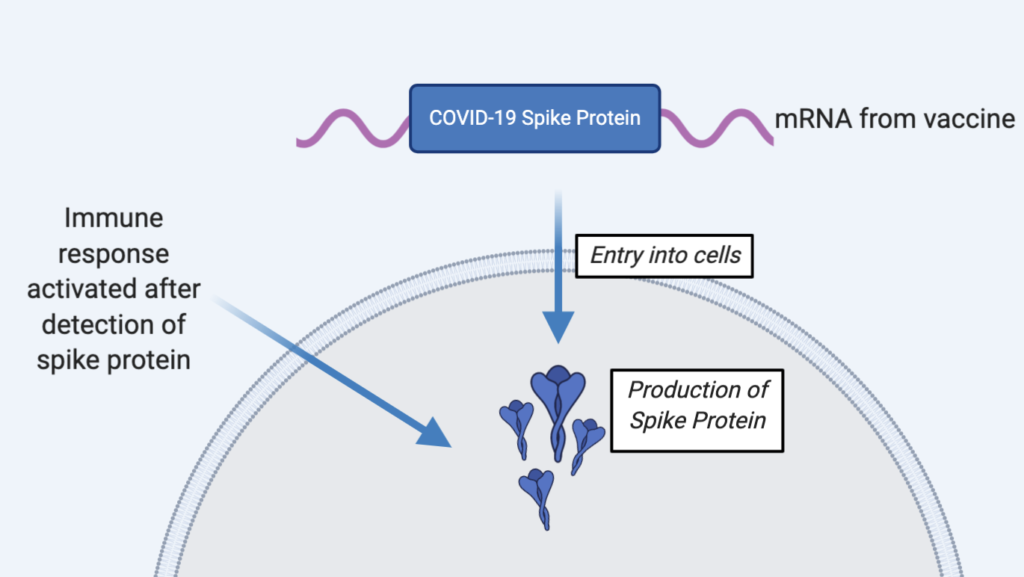
Figure 2 – A) Normal process of protein production in our cells B) Process of spike protein production through vaccine’s introduction of mRNA which tells the cell to produce the spike protein, which triggers an immune response, and subsequent immunity. Schematics made on BioRender.
There are some common conspiracies, that this vaccine enters our genome, or it contains a chip for government tracking. To dispel these, mRNA cannot enter DNA (thus, our genome), as DNA and RNA are similar, but different molecules, which cannot stably co-exist as one. Furthermore, RNA cannot become DNA without an enzyme not found in our body. Also, in the impossible circumstance, it does become DNA, it cannot enter our genome without identical DNA sequences on either side of the gene. As for the chip, there is nothing more I can say than this is false. If you are concerned, however, your smartphone tracks your GPS, your internet searches, and monitors who you contact, the government already has the means to track you, so a chip in a vaccine would not be efficient. It is concerning that people are turning against vaccines which have helped to increase life expectancy, and are the right first step in ending the pandemic and returning to everyday life.
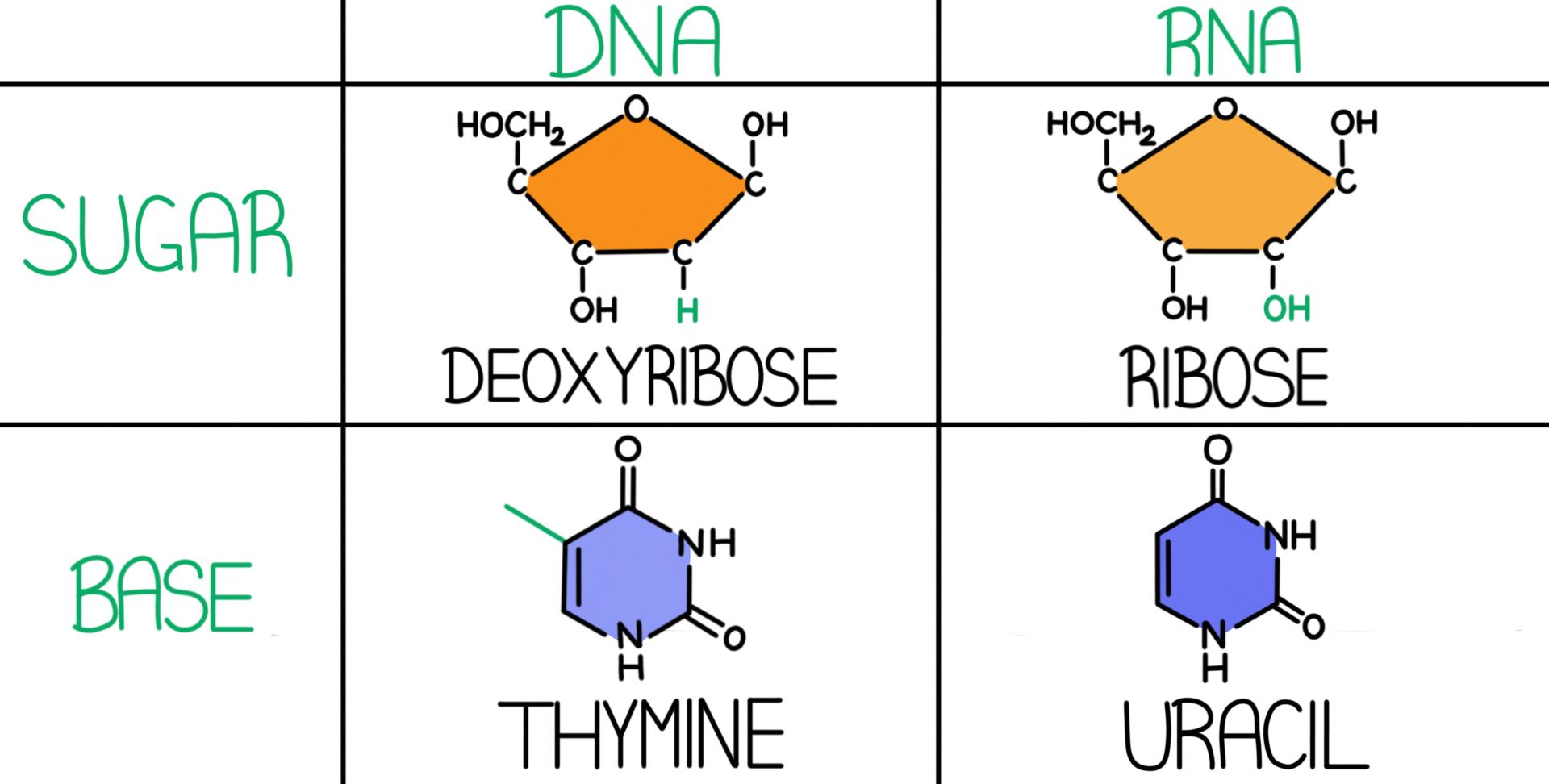
Figure 3 – Schematic demonstrating the molecular difference between DNA and RNA, in this case RNA has a riobose sugar with a hydroxide group (OH) on the 2nd Carbon. Whereas, DNA’s deoxyribose has a hydrogen (H) at the 2nd Carbon. Additionally, DNA and RNA contain the bases: Adenine, Guanine, and Cytosine. However, DNA contains Thymine, whilst RNA, contains Uracil – an altered thymine. Image taken from (Slizewska, G., n.d)
Bibliography:
- Ball, P. (2020), ‘The lightning-fast quest for COVID vaccines-and what it means for other diseases’. Nature.
- Cdc.gov. (2020). ‘Management Of Anaphylaxis At COVID-19 Vaccination Sites’ | CDC. [online] Available at: <https://www.cdc.gov/vaccines/covid-19/info-by-product/pfizer/anaphylaxis-management.html>
- Fda.gov. (2020). ‘FACT SHEET FOR RECIPIENTS AND CAREGIVERS’. [online] Available at: <https://www.fda.gov/media/144414/download#:~:text=The%20Pfizer%2DBioNTech%20COVID%2D19%20Vaccine%20includes%20the%20following%20ingredients,)%2C%20potassium%20chloride%2C%20monobasic%20potassium>
- Hargrove, J.L. and Schmidt, F.H., (1989). ‘The role of mRNA and protein stability in gene expression’. The FASEB Journal, 3(12), pp.2360-2370.
- Hartenian, E., Nandakumar, D., Lari, A., Ly, M., Tucker, J.M. and Glaunsinger, B.A., (2020). ‘The molecular virology of Coronaviruses’. Journal of Biological Chemistry, 295(37), pp.12910-12934.
- Huang, Y., Yang, C., Xu, X.F., Xu, W. and Liu, S.W., (2020). ‘Structural and functional properties of SARS-CoV-2 spike protein: potential antivirus drug development for COVID-19’. Acta Pharmacologica Sinica, 41(9), pp.1141-1149.
- Slizewska, G., (n.d). ‘DNA Vs. RNA — Differences & Similarities – Expii’. [online] expii. Available at: <https://www.expii.com/t/dna-vs-rna-differences-similarities-10205>

